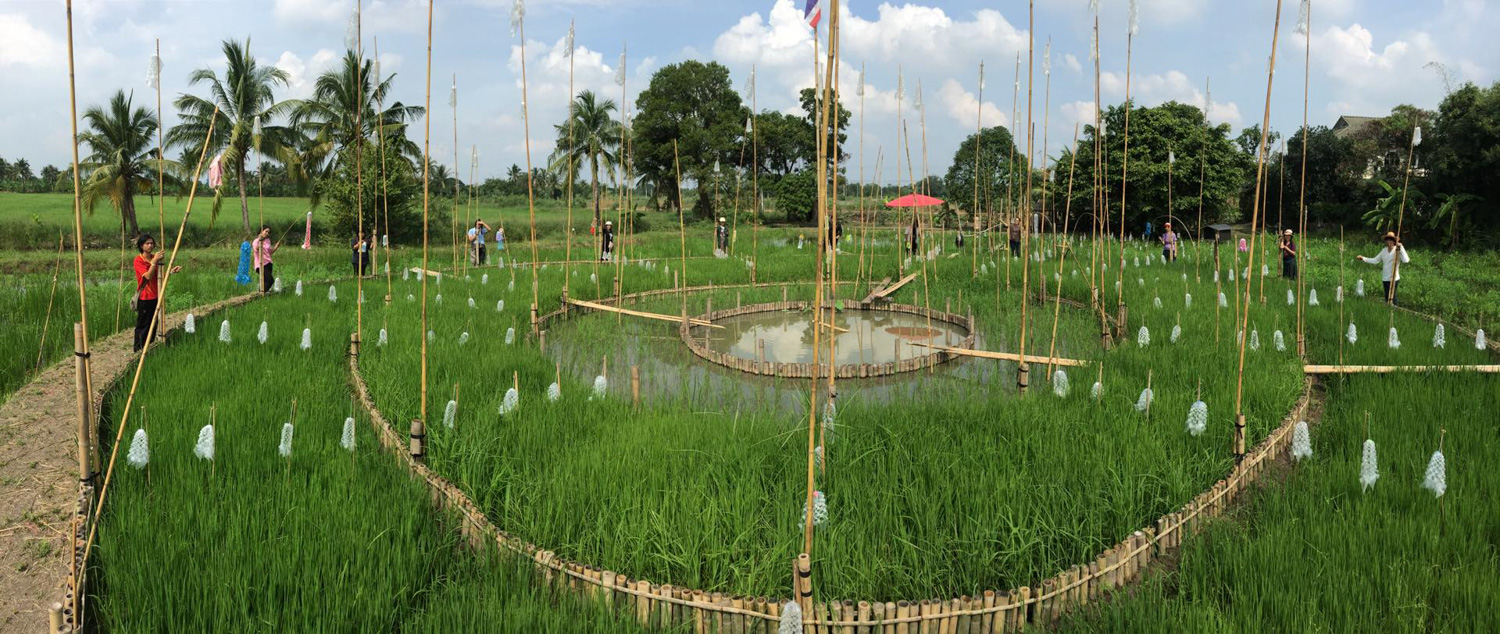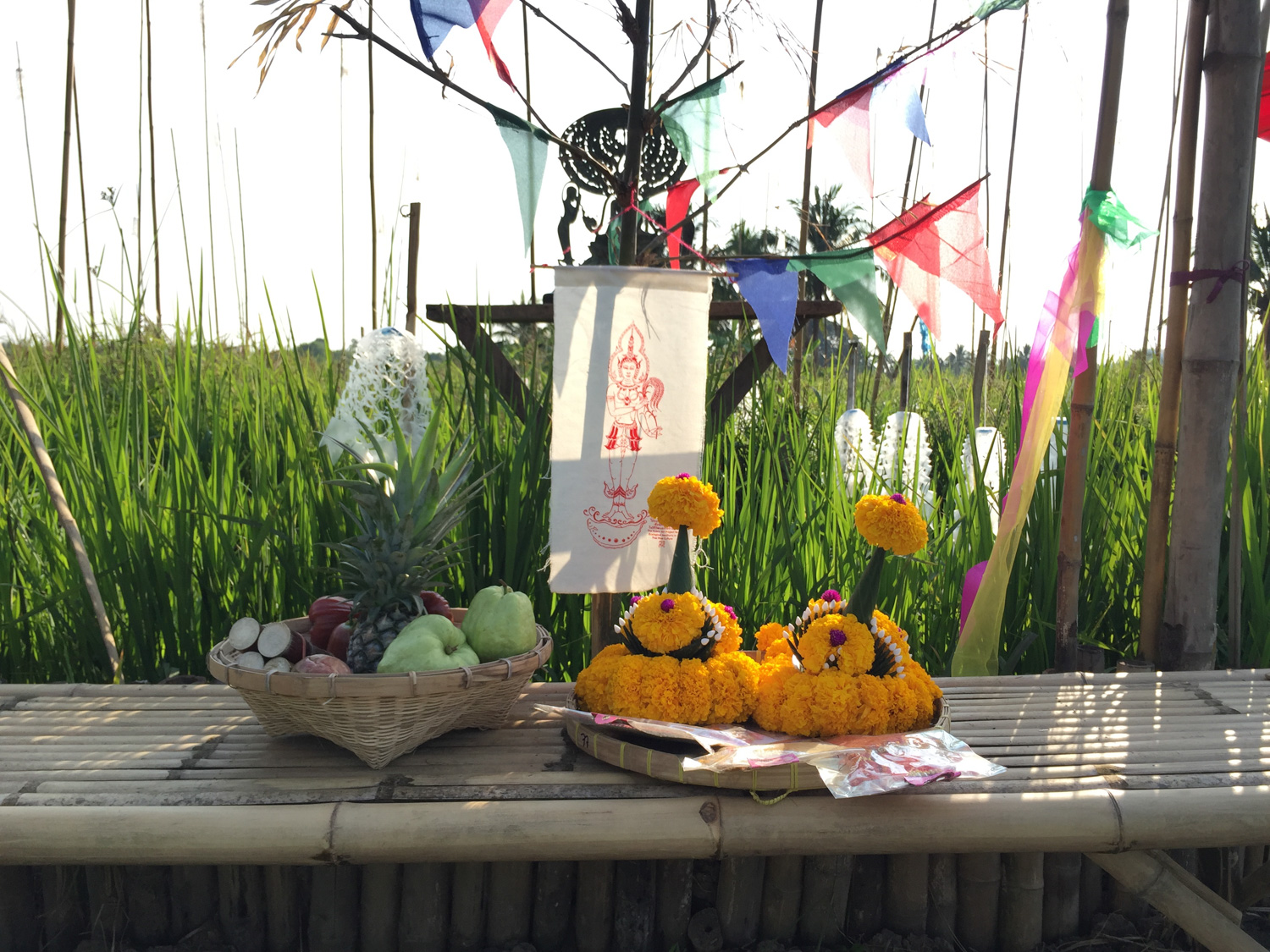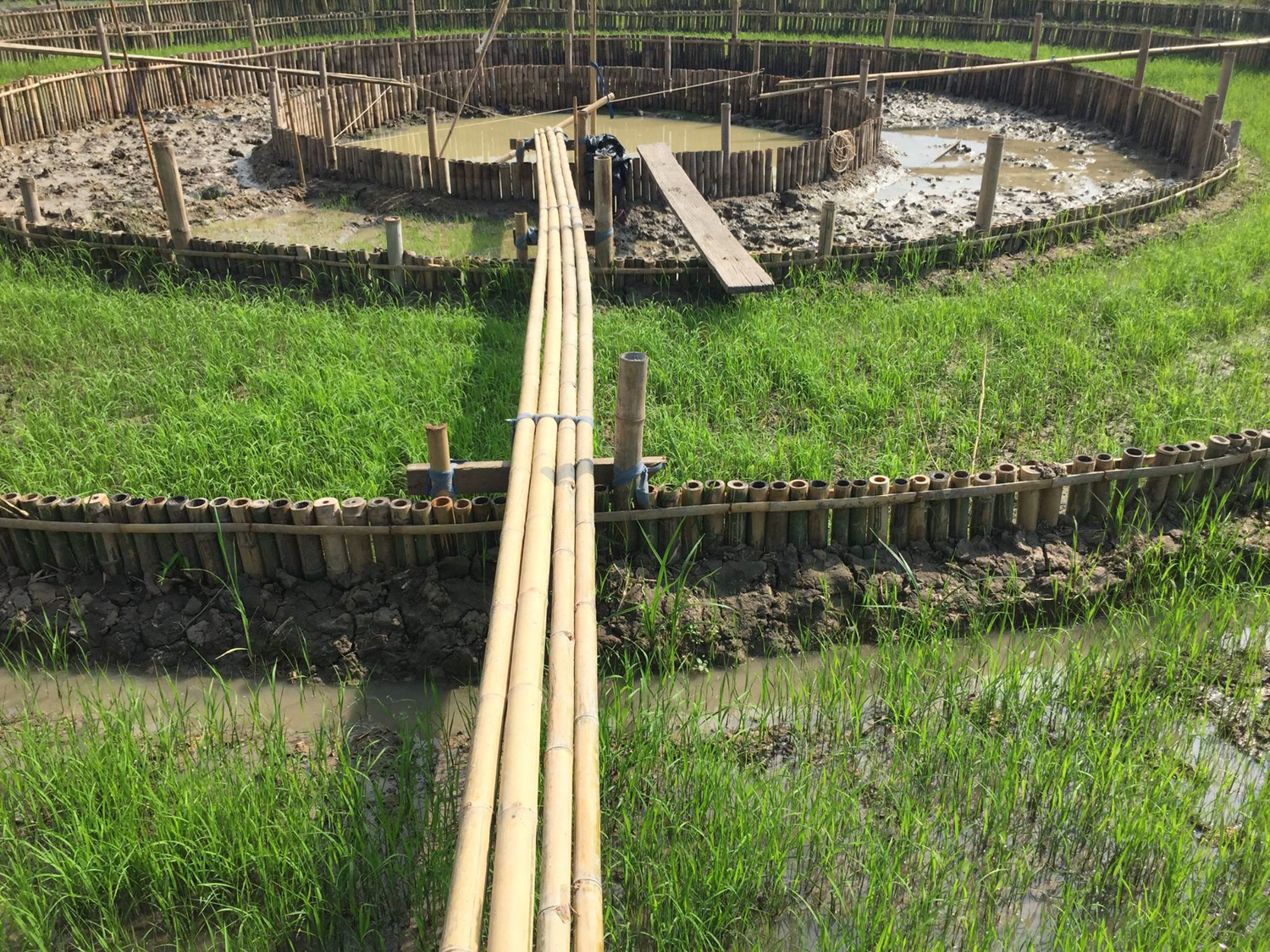WIJIT APICHARTKRIENGKRAI RECALLS THE LOST TRADITIONAL RICE FARMING METHOD AND THE BEAUTY OF THE RICE CULTURE IN ’THE RICE FIELD PROJECT’, A PUBLIC ART CREATED IN COLLABORATION WITH LOCAL FARMERS
TEXT: SURAWIT BOONJOO
PHOTO COURTESY OF WIJIT APICHARTKRIENGKRAI
(For a Thai, press here)
The circular rice field surrounding ‘Anodat Pond,’ a lotus pond at the center of the ecological environment, is a public art by Wijit Apichartkriengkrai. Surrounded by a square rice field of farmers, the project was located at Ngew Rai Subdistrict, Nakhon Chai Si District Nakhon Pathom Province, not so far from Bangkok. This field was set up as a space to learn, experiment, and create by integrating various fields of science to study and develop through traditional and authentic farming methods. Modern development has shifted the way people work with their lands, from family farming to commercial farming under the monopoly cycle of modern agriculture that emphasizes mainly business.

The project was conceptualized by noticing problems in today’s rice fields, such as ecosystems, economics, and social sciences. The artist has adopted the artistic method into the discussion through the idea of ‘Cultural Landscape’ to convey the story of rice in a different dimension. Apichartkriengkrai saw that the rice culture has changed drastically and has lost its beauty or aesthetics in all aspects, so the Circle Rice Field Project was not only different in form and shape. According to Apichartkriengkrai, the circular form signified no starting point and no end – it can loop back in that point, wherever it starts. The circular field, in addition, can be created in a terraced contour, coupled with planting in different periods and varieties of rice. The rice then will be varied in height and color shade. That becomes visual beauty. He also used the ‘field decoration’ to bring the traditional art of paper cutting to make decorative wreaths around the rice fields.

The interactions of people flowing in this rice field are also equally beautiful. Since the creation of this plot up even the process of preparing the area, cultivating, and harvesting, local farmers also took part. It is the main driving force of the new possibility. Throughout the project, people of various ages and professions had come to participate in the activities that it became a space for disseminating and creating knowledge of rice culture. The connection and interaction of visitors had created such an atmosphere of fun, warmth, or relaxation, together with the uplifting visual beauty.

Over the past few years, Apichartkriengkrai has continued to contemplate and develop the concept of the project. He wanted to see the fields, not just one, but many rice fields in different locations as a learning center with many other creative and cultural activities such as farmers’ markets, coffee shops, and art galleries. It can become a part of the school, hospital, or temple. The circular Rice Field Project then will be public art in the form of a conceptual framework that considers the commercialization of agricultural land. The artist wants to create an art space of sustainable integration where the work of art could help generate income and social activities.
At this stage, Apichartkriengkrai is interested in working with designers, architects, and cultural developers to create new concepts and models or collaborate with existing projects. If anyone is interested or has an opinion to exchange and wants to track information about the project, he is most welcome.


